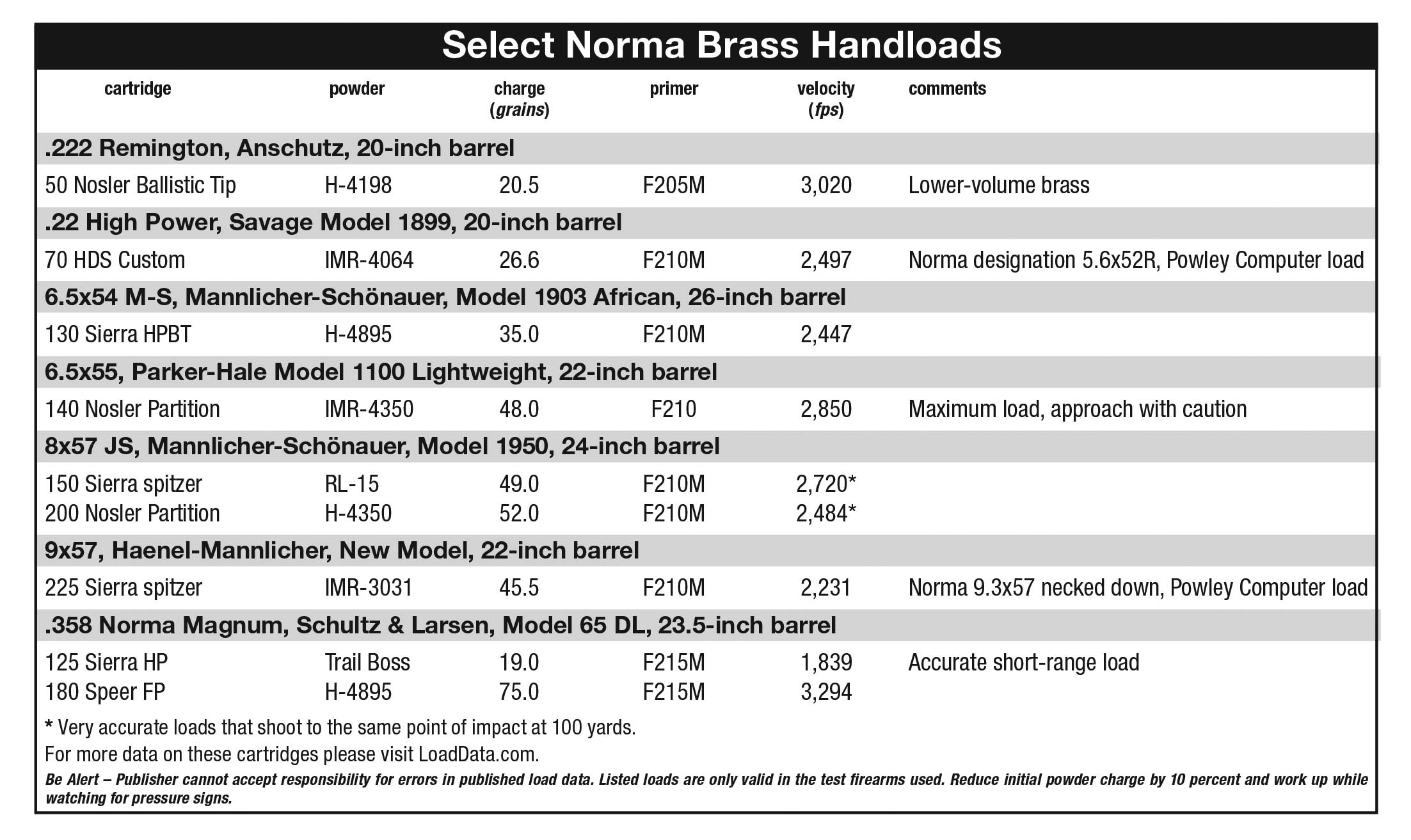Norma Brass
Founded For Handloaders
feature By: Terry Wieland | June, 18
One of the sweetest things to a handloader’s ear, as he ponders an alluring rifle for a rare cartridge, is to hear the guy behind the counter say, “Norma makes brass for that.” When you hear those words, you know that most (if not all) of your troubles are
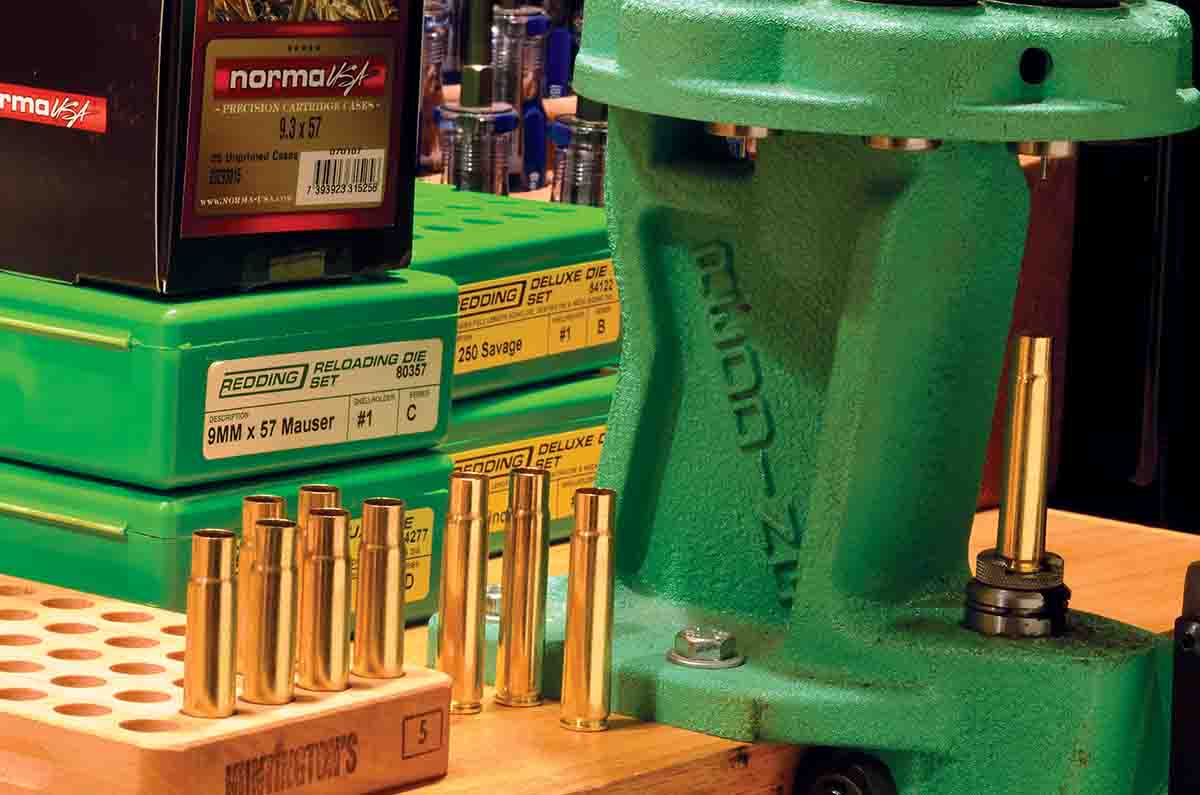
American shooters have had access to brass, bullets and loaded ammunition from the Swedish company off and on for 60 years now. Sometimes we didn’t even know it. Back in the 1960s, when some hotshot was singing the praises of his .300 Weatherby Magnum, he was actually touting Norma ammunition. The company has been making Weatherby brass and providing Weatherby’s loaded ammunition since the 1950s – and great stuff it is.
Today, Norma USA has a firm foothold on American shores, but it has been a long time coming. Since 1950, there have been a few false starts, a few unrewarding partnerships and the unpredictable vagaries of currency fluctuations. What has never changed, however, is the consistently high quality of Norma products. In my opinion – based on more than 50 years of experience – Norma brass, especially, has maintained its quality year after year, and that is no small feat.
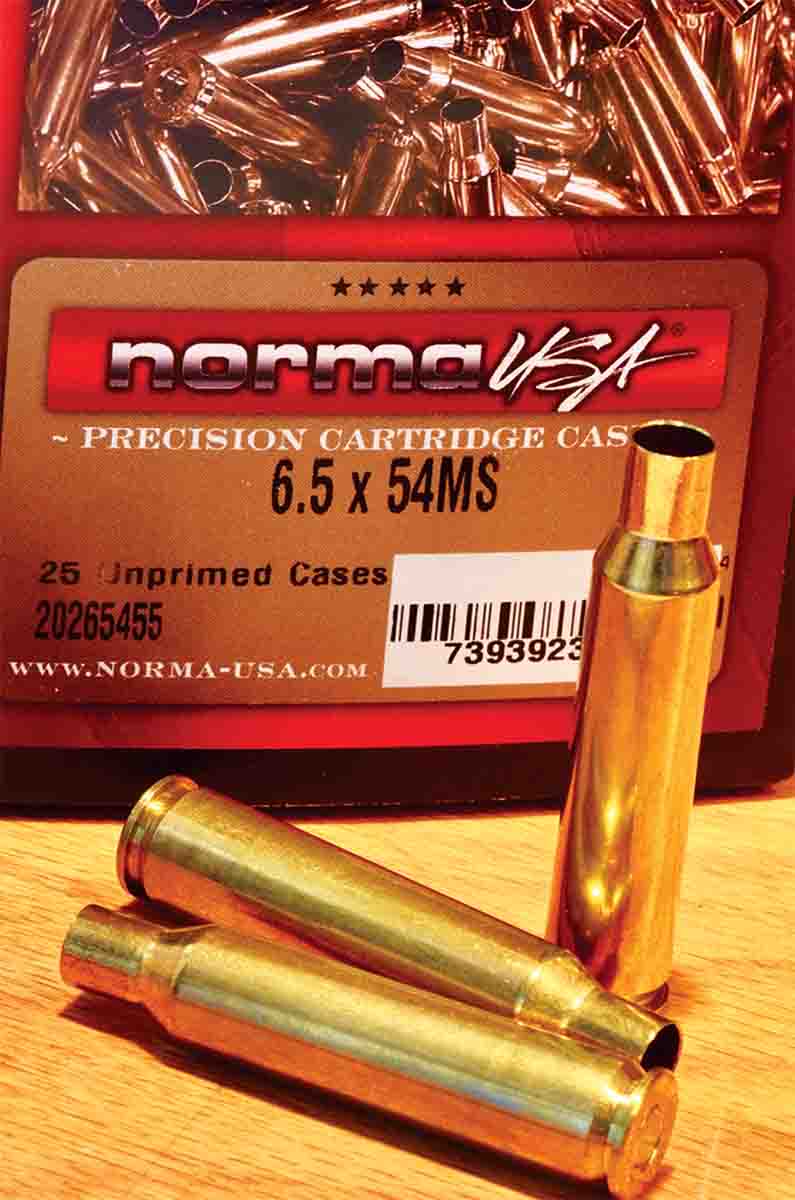
Norway has always been a nation of shooters. For years, Norwegian marksmen made their passion affordable by casting bullets and loading their own ammunition. With smokeless powder, this was no longer possible, since only jacketed bullets could withstand the increased heat and pressure, so the Enger brothers set up a small shop to make jacketed bullets for them. As business grew, contracts came their way, including one from the government of Sweden. This required a new facility in the small Swedish town of Åmotfors, which Norma has called home ever since.
The entire history is told in the Norma handloading manual (which belongs on the shelf of anyone who uses Norma brass or bullets), but one of its earliest innovations deserves particular attention. The company developed a method of pressing the jacket to give the bullet what we now call a boat-tail. It was well known by target shooters at the time that a bullet’s accuracy depends on the consistent precision of its base. Norma’s ballistics engineer, Karl Wang, developed a method of rolling the jackets and imparting a boat-tail. This was a ballistic breakthrough. Norma bullets acquired a reputation for long-range accuracy, and the company’s process provided a decided commercial advantage that lasted for years.
Over the next century, Norma Precision branched out into the production of brass cartridge cases, primers and loaded ammunition for target shooters, hunters and the military. At one point, the company designed and manufactured its own handloading equipment, including a press. Today, many American shooters also know the brand for its line of smokeless
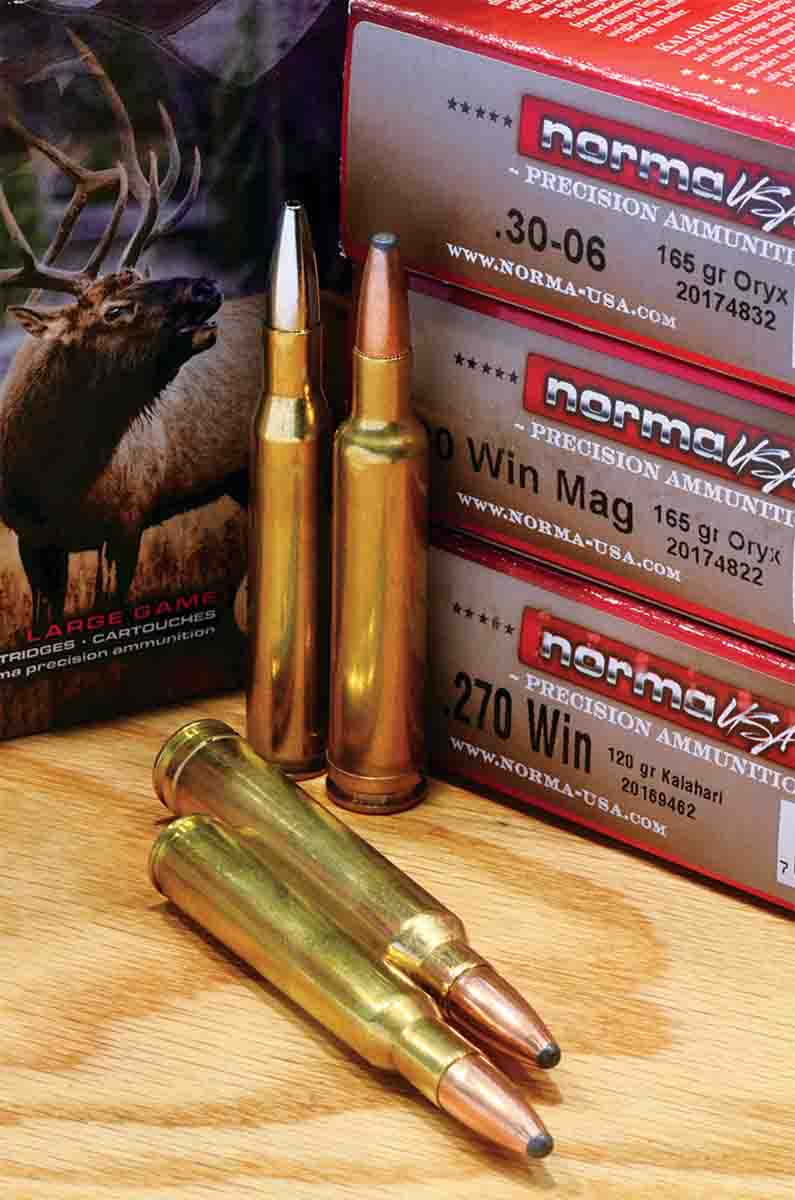
Throughout this time, Norma Precision aimed for the highest quality. Unfortunately, high quality often brings high prices with it. As an import, Norma has always been at a disadvantage in that regard anyway, competing with domestic products, and currency fluctuations don’t help the situation. As a handloader, however, price matters less to me than quality and availability, especially when dealing with cartridges that are not readily available elsewhere.
Since 1975, I have never been without a Weatherby rifle of some description, which meant Norma-made brass. In 1987 I became quite fond of the 6.5x55 Swedish cartridge; at the time only loaded Norma ammunition was available, so I bought and used that. In fact, I still have some brass that I’ve been loading off and on for 30 years. Later I acquired both a 7x61 Sharpe & Hart and a .358 Norma Magnum. Brass-wise, both are Norma exclusives. Most recently, I have been shooting a 9x57 and several 6.5x54 Mannlicher-Schönauers. Norma makes 6.5x54 M-S brass, although it no longer offers loaded ammunition. And while it does not currently make 9x57 brass, it does have 9.3x57, which can be necked down as easily as resizing a fired case.
The only complaint I have ever heard about Norma brass was one soul who claimed that he found it to be “too soft.” That has never been my experience, and I don’t really understand the complaint anyway. As many would-be manufacturers have discovered to their cost, stamping out cartridge cases is no simple matter. Aside from requiring the proper alloy of brass to start with, the finished case needs to have a base that is relatively hard but with a body – and especially a neck – that is malleable enough to accept the bullet, resilient enough to grip it firmly and soft enough to expand readily and provide a complete gas seal.
A base that is too soft can cause all kinds of difficulties when subjected to pressures exceeding 50,000 pounds per square inch (psi). These include rupturing and flowing into crevasses in the action, impeding operation or even jamming the rifle. It can also cause the primer pocket to expand, rendering the case useless for reloading. A case body that is too hard, on the other hand, becomes brittle and may split – sometimes on first firing. And a neck that is too hard may split even without firing, just from seating the bullet, or from leaving it in storage. Many boxes of old ammunition have split necks simply due to age.
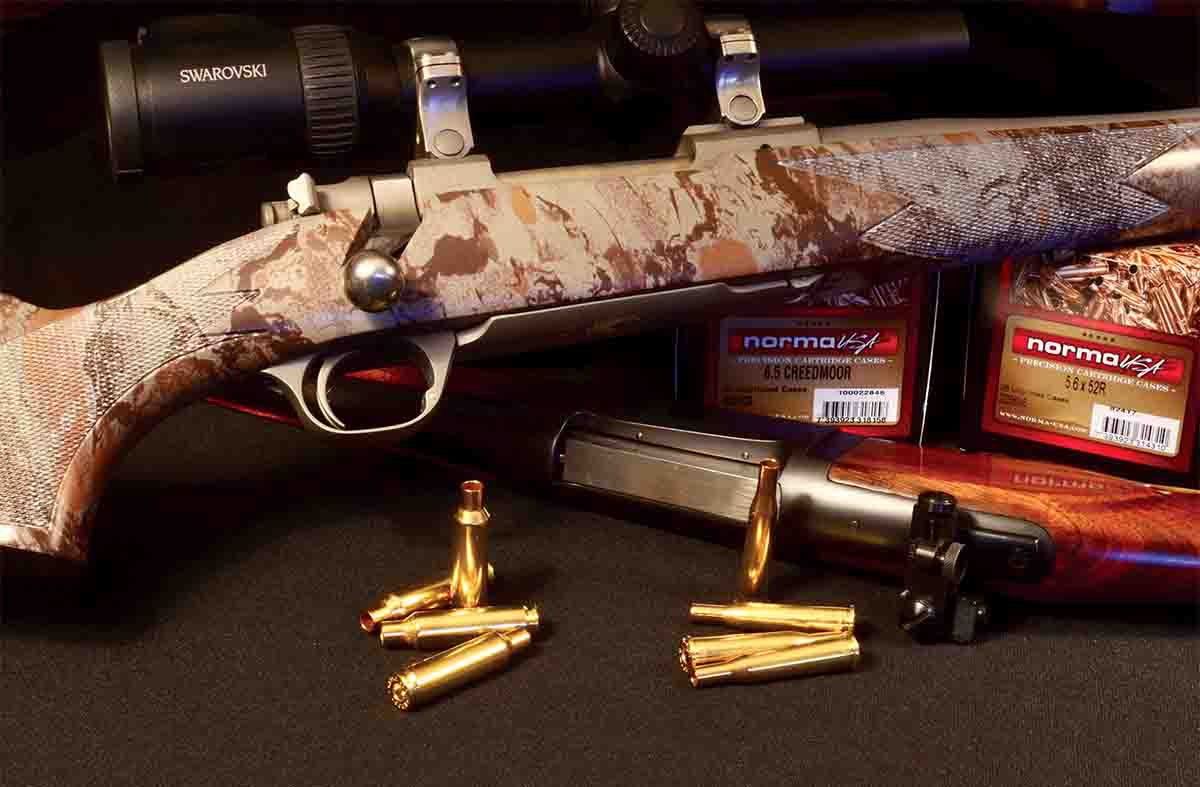
Starting with brass that is a little soft around the neck and shoulder is a minor problem that solves itself – hence, my difficulty in appreciating the complaint about Norma brass being soft. Anyway, I have never found that to be the case, and over the years have reloaded literally thousands of Norma cases, and some individual cases 20 or 30 times.
Part of Norma’s major push into the American market after 2000 included the introduction of its African PH ammunition line. This proved to be a huge success. First, the ammunition itself is excellent, loaded to hunting velocities with Woodleigh bullets in obscure calibers such as the .500 Jeffery and .505 Gibbs. The simple availability of brass gave both of those cartridges a real shot in the arm. Originally intended as a “prestige” item, African PH ammunition became, and remains, a Norma bestseller.
.22 High Power
The .22 Savage High Power (also called the “Hi-Power” or “The Imp”) was the first real small-caliber, high-velocity cartridge in America, designed by Charles Newton and introduced by Savage in 1911 in the Model 1899.
Although it was quickly superseded by newer, better cartridges like the .250-3000, and only Savage chambered it commercially, the .22 High Power became a favorite in Europe for single-shot and double rifles. Over there it’s known as the 5.6x52R, and it achieved such popularity that most European cartridge manufacturers continue to make it right up to the present day. Of these, the only company I know of that offer high-quality virgin brass in the U. S. is Norma. For .22 High Power owners, it’s a lifesaver.
6.5x54 Mannlicher-Schönauer
This is one of the most popular and successful hunting cartridges of all time, and it was loaded commercially in the U.S. until long after the Second World War. One by one, however, American companies dropped it and by the 1960s, only Canada’s Dominion brand was available here. Norma still offers its superb brass in the U.S. but not loaded ammunition.
The 6.5x54 M-S offers some challenges for handloaders not encountered with other cartridges. Its chamber dimensions tend to vary, with some displaying signs of excessive headspace while others are so tight they present extraction difficulties even with mild handloads. Since handloading is the only way to keep these lovely rifles shooting, having top-quality brass is an absolute must. It will fireform to the chamber and can then be neck-sized only. This will obviate the headspace problem.
One of my Mannlichers had an overly snug chamber, and absolutely nothing worked until I had it reamed slightly and acquired some Norma brass. Older, odd-brand brass still doesn’t work, but with Norma brass it fires and cycles like a dream. I keep a separate batch of brass fired only in that rifle and then neck-sized.
9x57 Mauser
The 9x57 Mauser was developed in the 1890s and is nothing more nor less than the venerable 8x57 necked up. In power it compares to the much later .358 Winchester, although most European loadings fit in between the .358 and the smaller .35 Remington. It can be loaded to launch a 225-grain bullet at 2,200 fps or a little faster, making it a great woods cartridge for anything up to elk or moose.
The 9x57 was one of the original chamberings of the Haenel-Mannlicher rifles imported to the U.S. from 1902 to 1914. They were based on Commission 88 actions and sport such mouth-watering goodies as full-length integral ribs, half-octagonal barrels and double-set triggers. Pick one up, and the urge to shoot it becomes almost overwhelming.
Since Norma offers 9.3x57 brass, necking it down a mere .012 inch (.3mm) is easier than resizing fired cases. It’s so effortless a handloader doesn’t even need to lube the cases. By modern standards, the 9x57 is a low-pressure cartridge; in a light rifle, it also has a pretty hefty kick. Keeping loads reasonable benefits both your shoulder and the brass, and it can be reloaded almost indefinitely.
.500 Jeffery and .505 Gibbs
These are two old English nitro-express cartridges intended for magazine rifles. The .500 Jeffery was actually a development of August Schuler in Germany, but it was given a second home in London by W.J. Jeffery around 1925. The .505 Gibbs was introduced in 1911.
Historically, few rifles were made for either cartridge. According to reliable estimates, probably only 100 or so of each were made between their introduction and 2000, which means that more have been made for both since 2000 than in the 80 years previous. Much of this renewed popularity can be laid at Norma’s door, since the company included both in its African PH series.
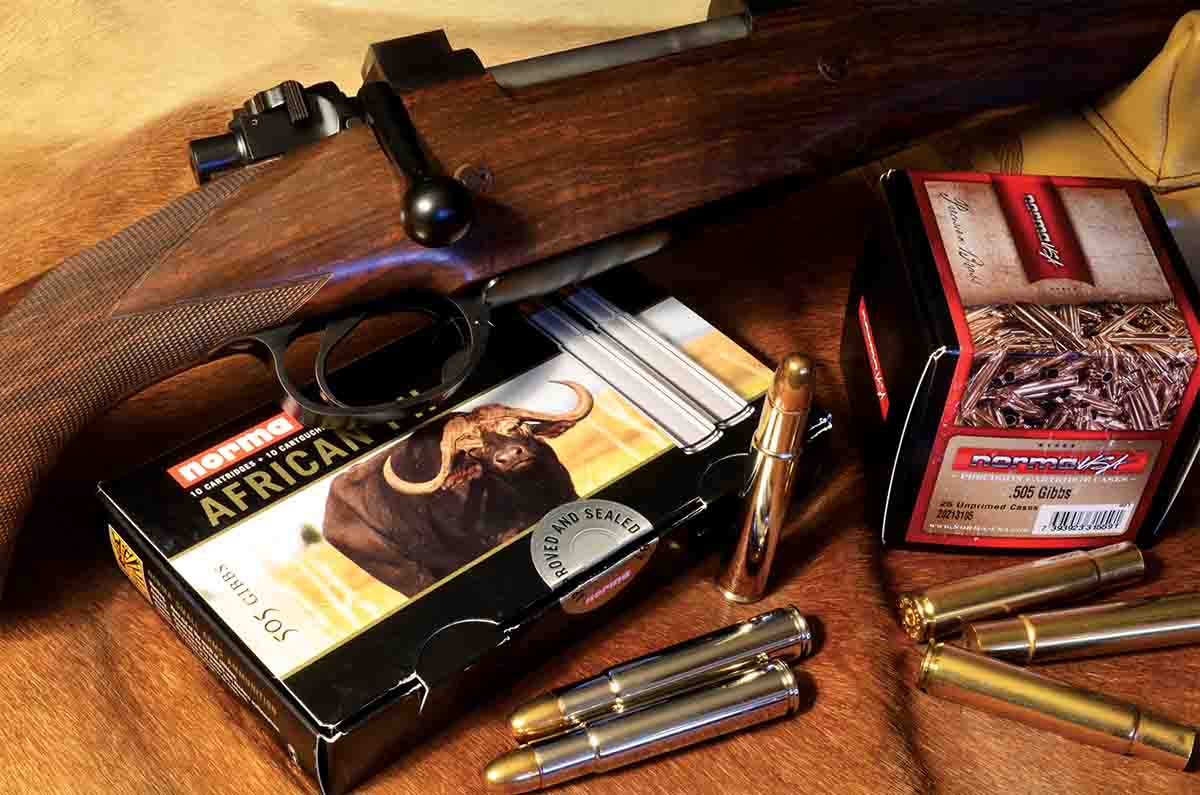
In the 1950s Norma was involved in the introduction of the 7x61 Sharpe & Hart, and later two cartridges of its own – the .308 and .358 Norma Magnums. In 2000, it adopted the wildcat 6.5-284 (6.5-284 Norma), and provides both ammunition and brass. Most recently it has introduced two new target and hunting cartridges, the .300 Norma and .338 Norma Magnums.
All of the above cartridges have merits – and some deserved a better reception than they received – but in every case, the availability of Norma components guaranteed that owners of a 7x61 S&H, .358 Norma Magnum and 6.5-284 had access to some of the finest components in the world, and for many years after their introduction. As owners of such orphans as the .256 Winchester Magnum will attest, this is no small thing.
